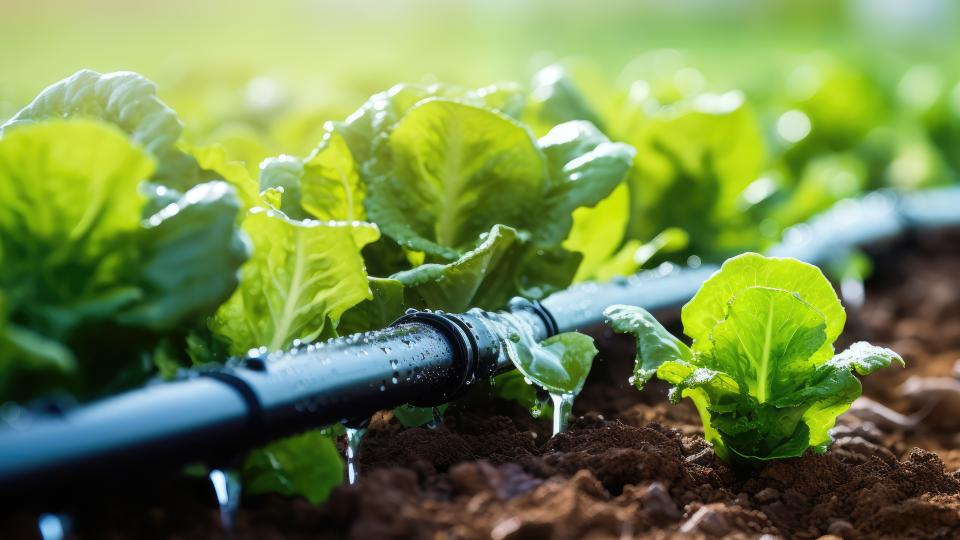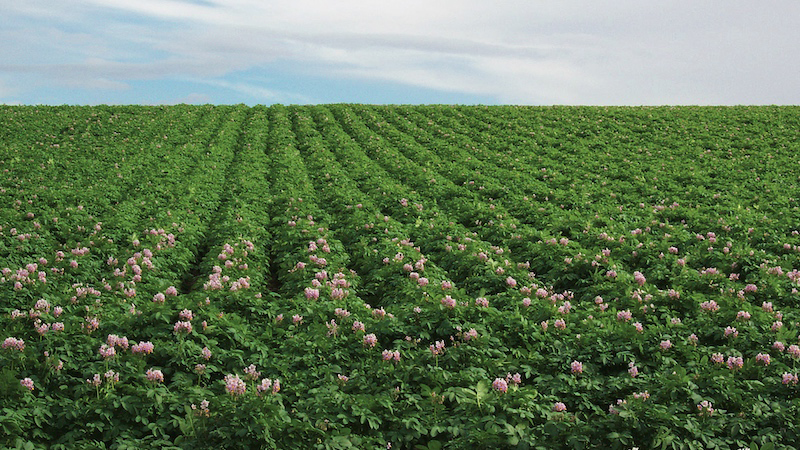Why the Right Filtration Is Key To Efficient Irrigation

Drip irrigation systems perform most efficiently when protected by mechanical filtration.
Photo: AkuAku – stock.adobe.com
Every type of irrigation system, including those used on vegetable farms, should always include some form of filtration, according to Aviv Vered, a Regional Sales Manager with Amiad Water Systems.
“It doesn’t matter if it’s drip, overhead, or even pivot irrigation,” Vered says, “you will have to use a filter to protect the entire system.”
Why? The industry calculates that every 10% decrease in distribution uniformity (DU) — the term used to define a system’s efficiency and performance — will result in 30% wasted water.
Vered, who presented on the topic at the annual Great Lakes EXPO, says the primary benefit of filtration is to protect the nozzle, but other parts of the irrigation system should be considered.
Mechanical Filtration
Vegetable growers need focus only on mechanical filtration, Vered believes, rather than the high-cost reverse osmosis (RO) systems that are typically used for drinking water. The three most common types of mechanical filtration are disc, screen, and media, while microfiber is rarely used.
“Each has pros and cons like anything else in life,” Vered says.
Historically, end-users largely used media filters consisting of various resins, carbon steel filters or chemical filters because that is what was sold 40 years ago, Vered says. “Is it bad? No.”
Today screen and disc filters are the more popular options, according to Vered. Screen filters are comprised of woven stainless-steel mesh, polypropylene, nylon, or polyester. Disc filters consist of a stack of grooved discs through which the water circulates.
Choosing a Filter
Five questions should be answered during the filter selection process, Vered says:
1. What is the maximum flow available in terms of gallons per minute (GPM) or gallons per hour (GPH)?
“If it’s going to be 70 GPM, I probably don’t need more than a 2-inch filter,” Vered says. “If I’m going to use 300 or 500 GPM, then I will probably think about a 4-, 6-, or 8-inch filter or a filter that will have the capacity that holds so much water.”
2. What are the minimum and maximum operating pressures available in terms of pounds per square inch (PSI)?
“Not the pressure of the sprinkler; we’re talking about what pressure we’re getting out of the pump, out of the well,” he says.
3. What is the inlet size of the water line?
“The GPM goes back to the size of the piping we have,” Vered says.
4. What is the filtration requirement of the system?
“What are we protecting? The sprinkler? The drip tube? Or something smaller than that?” Vered says.
5. What debris is being filtered (sand, algae, sticks, leaves, plants, clams, mussels, etc.?
Micron vs. Mesh
Mesh units indicate the number of openings per inch — the larger the mesh number, the finer the sieve. Meanwhile, a micron (1/1000th of a millimeter) is the unit used in Europe. Contrary to mesh units, the smaller the number of micrometers, the finer the sieve.
Microns are usually more accurate, according to Vered. Most irrigation filters, disc, or screen, he says, range between 80 and 400 microns. “Anything over that or below that is considered for a very particular application,” he adds.
Manual vs. Automatic Filtration
Vered frequently hears from clients: Why should I use a self-cleaning automatic filter? Why do I have to invest so much?
“Why? Because the savings and return on investment when it comes to an automatic filter vs. a manual filter is something that any end-user is finding in the first month or two after installing an automatic filter,” Vered says.
The merits of an automatic filter, according to Vered, include:
- Can be cleaned without interrupting irrigation
- Some manufacturers offer high-quality 316L stainless steel screens
- Polypropylene or steel housing
- Typical sizes range from 2 inches to 36 inches
- Fully automated and optimized cleaning process
- Consistent performance of the irrigation system
- Some manufacturers offer electronic and/or wireless control with added HDMI features
Flexibility of installation
On the downside, the cost of automatic filters is higher. Higher minimum water pressure is sometimes required to sustain the cleaning cycle. Longer flushing cycles are also sometimes required, resulting in significant rejected water volume.










